
FODMAP diet: who is it for and how to implement it easily
If you suffer from IBS (irritable bowel syndrome), you may have heard of the low FODMAP diet before but may have given up because of its complexity.
In this article, I explain what a low FODMAP diet is in a simple and easy way to understand and remember, whether it is for you or for a loved one who is on this diet.
I will then give you some advice you can follow, whether at home, eating out, or on vacation.
Who suffers from irritable bowel syndrome?
It appears that a large number of people have this problem, sometimes without even knowing it.
People who suffer from a central nervous system disorder (e.g. fibromyalgia), food intolerances or allergies, who have had severe food poisoning, or women with hormonal problems are likely to have IBS.
All in all, we can estimate approximately 10 to 15% of the world’s population suffers from this syndrome, according to the American College of Gastroenterology, sometimes without even being diagnosed.
There are therefore many people who might benefit from this diet which can help reduce the symptoms related to this condition.
Definition of FODMAP
The definition is quite difficult to remember and can even be scary.
The meaning of FODMAP is as follows:
- F = Fermentescible (fermentable)
- O = Oligosaccharides
- D = Disaccharides (lactose)
- M = Monosaccharides (rich in fructose)
- A = And
- P = Polyols
This is why we prefer to use the initials FODMAP…
To put it simply, these are all the sugars found in food and are difficult to digest.
Why are they difficult to digest?
Because they ferment in the large intestine (hence the first F = fermentable) and give us bloating, nausea and sometimes even stronger symptoms like diarrhoea or constipation.
What you should know about the FODMAP diet: some general points
- Everyone has their own FODMAP
The list of foods allowed as part of a FODMAP diet may seem very limited at first, but we will then reintroduce foods little by little according to our tolerance.
That’s why over the long term, a FODMAP diet will differ slightly from person to person, even if the basics will always be more or less the same. So don’t feel bad when you see the long list of foods rich in FODMAPs to avoid.
Be aware that some may be able to be reintroduced, in small quantities, in your diet.
- The low FODMAP diet is a healthy diet
Indeed, we start by removing sugary, fatty and processed foods!
We also eliminate chemicals such as sweeteners, preservatives … as well as alcohol. So this is a very good thing for your overall health, and as a bonus, there is a good chance of losing a bit of weight, although this is not the purpose and it doesn’t have to be this way.
- Simple preparation
The low FODMAP foods are simple in their preparation and cooking (not in sauce, fried or breaded, but rather grilled, in the oven, boiled or steamed). So: easy to do!
This is good news, we will relearn how to eat healthily by creating easy and fun FODMAP menus!
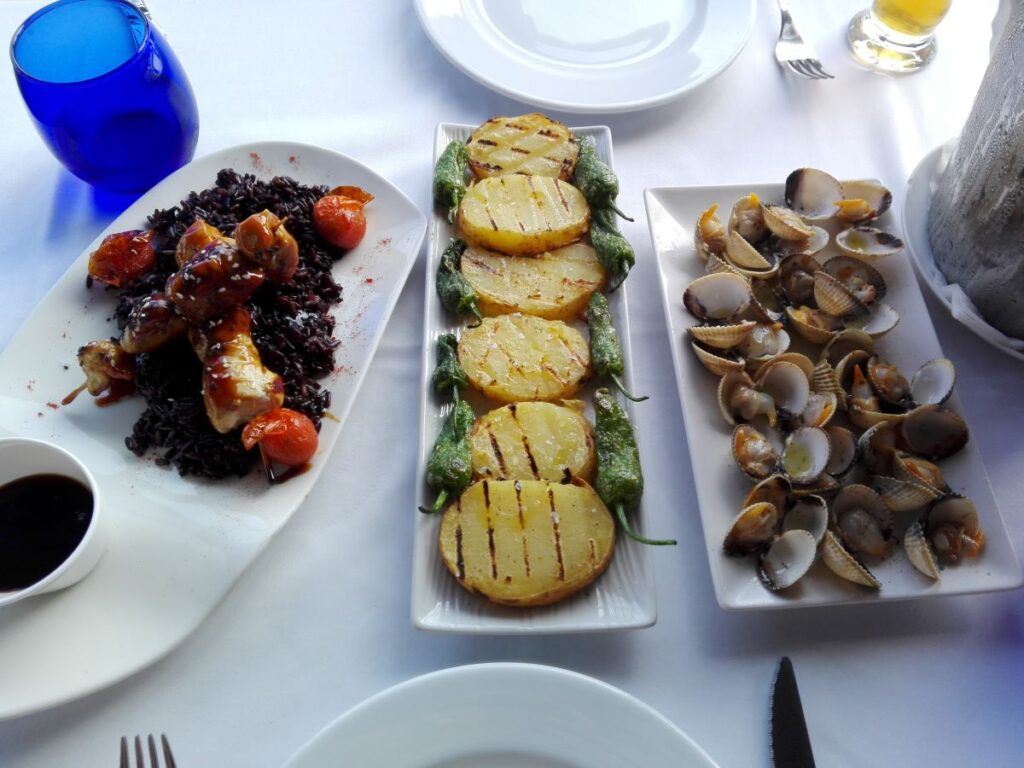
- There are FODMAPs in all foods
All we need to do is simply distinguish between foods low in FODMAP (the easiest to digest) and high in FODMAP (foods to avoid).
The FODMAP diet explained simply
As mentioned earlier, FODMAPs are found in ALL foods.
We will therefore have to distinguish between those that have a lot of FODMAPs from those that have few.
So I will go back to each food group and try to give you a simplified and easy-to-remember summary.
FODMAPs in fruits
In my opinion, this is the easiest to remember.
In general, the sweetest tasting fruits should be avoided.
Which means that we can eat:
- Citrus fruits: lemon, tangerine, grapefruit, oranges
- Most of the “berries” red fruits: strawberries, raspberries, cranberries, etc.
- Some exotic fruits: passion fruit, pineapple, banana, melon, kiwi
In general, you should avoid fruits containing stones or pips (apricots, peaches, apples, pears, avocados, cherries, mangoes, dates, figs, grapes).

FODMAPs in vegetables
That’s where it gets a little trickier.
But to simplify, we can summarize as follows:
- Avoid all legumes and peas (peas, chickpeas, white and red beans, lentils, etc.).
- Remove most of the chopped condiments from the Alliaceae family (garlic, onions, shallots, leeks).
- Remove the cabbages that produce gas (red cabbage, white cabbage, artichokes, etc.).
- Favour salads with small leaves (lamb’s lettuce, etc.) – but in small quantities – because irritable colons often have trouble digesting raw food.
- Beware of peppers, often recommended in FODMAP diets but difficult to digest because of their skin. So remove the skin, and prefer green to red.
- Also avoid asparagus and fennel.
- And of course, avoid beets (we make sugar with it so you can imagine!)
You can eat everything else! (low Fodmap vegetables include carrots, green beans, aubergines, courgettes, turnips, potatoes, celery, spinach, etc.).
Seasonings and condiments
All the condiments that are not “hot” and which often facilitate digestion, such as bay leaf, rosemary, turmeric, tarragon, sage, basil, peppermint, thyme, parsley, chives, ginger. So don’t hesitate to add these to all your dishes!
You can also eat mustard and mayonnaise.
As for ketchup, check the sugar content. It may be better to make your own.
You can also use oil and vinegar, soy sauce and butter (uncooked).
Sources of protein
When it comes to meat and fish, good news: you can eat anything that is not processed (no burgers or sausages, even vegan versions).
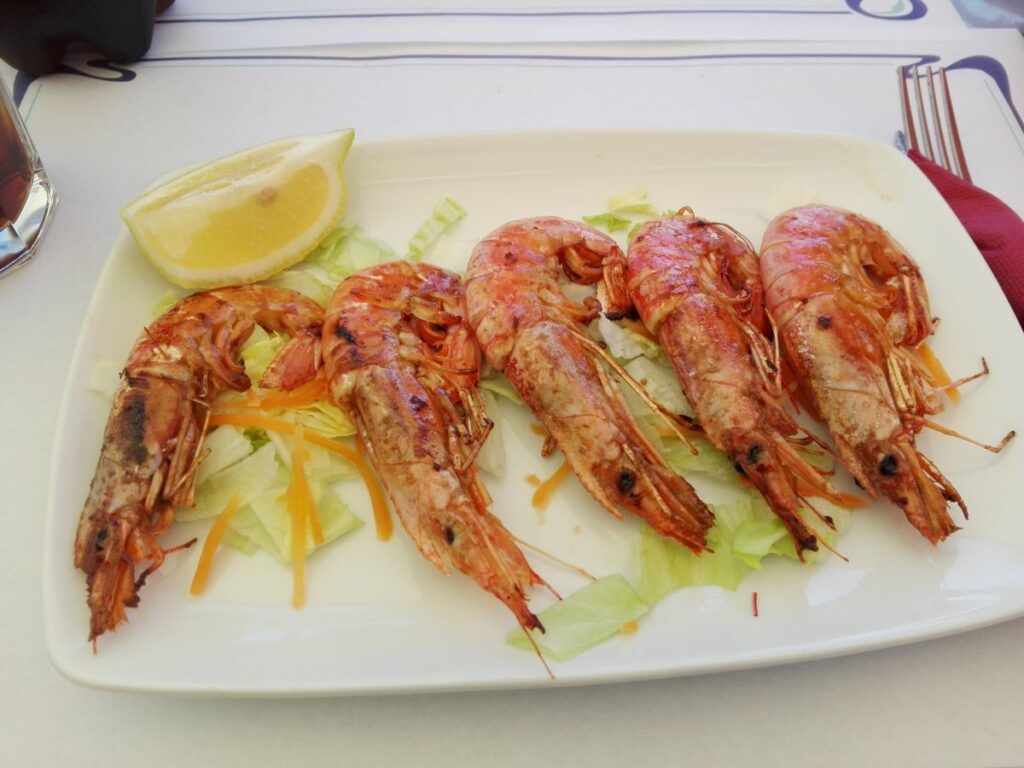
Be careful, however, not to eat them in a sauce.
Personally, I also prefer to limit myself to lean meats (turkey, chicken, white fish), especially at dinner time when it is best to eat light.
You can also eat eggs, firm tofu, nuts and seeds such as chia, flax, sunflower, sesame.
FODMAP and lactose
Remember the D in FoDmap refers to Disaccharides, another word for lactose, which must be avoided.
Ice creams, yoghurts and dairy products should be avoided.
The only exception is butter. Some cheeses are also fine to eat.
Replace soft cheeses by harder cheeses such as Emmental, Parmesan or Brie. In Spain, I eat queso curado or semi curado of goat cheese because I prefer to avoid cow’s milk.
And I don’t eat cheese very often.
FODMAP in cereals
We mainly avoid wheat, barley and rye.
Most other grains can be eaten without any problem, in moderation of course: rice, corn, spelt, buckwheat, quinoa, tapioca, oats.
A FODMAP diet is therefore not a gluten-free diet, but it is true that wheat, which is found in most products containing gluten, should be avoided.
Cooking methods for irritable bowel syndrome
How you cook food is also very important when you have IBS.
In general, our intestines prefer our food to be cooked rather than raw.
But not just any old how: either in the oven, steamed, boiled or even in a wok without too much oil (preferably extra virgin olive oil).
It is absolutely necessary to ban fried food! As I said at the beginning, we avoid anything that is fatty.
Because when you suffer from irritable bowels, you also very often suffer from dyspepsia.
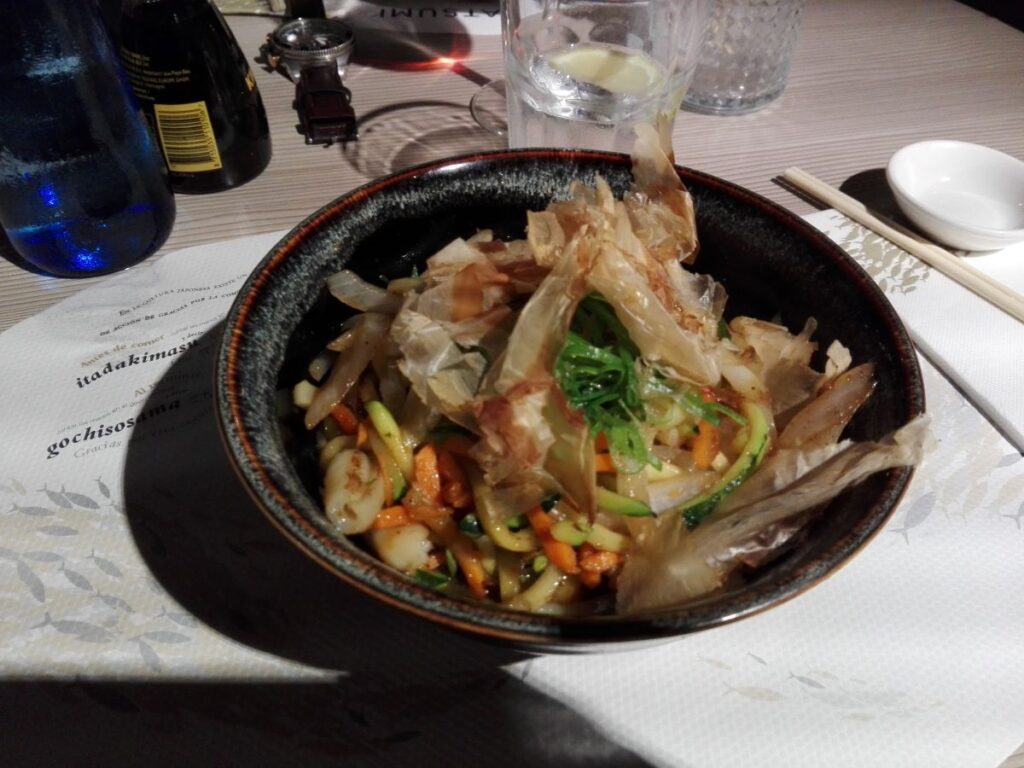
A FODMAP diet avoids polyols i.e. alcohol too
So that means all food and drink containing additives that end in “ol” (sorbitol, mannitol, xylitol, maltitol).
Sorbitol and xylitol are present in many chemical foods, like chewing gum or artificially sweetened drinks.
But polyols are sometimes also found naturally in foods like blackberries and avocado (sorbitol) and sweet potato (mannitol), which is why those foods must be avoided too…
It is better to consume drinks or food with sugar than those sweeteners. As long as the food contains no more than about 10% of sugar, it is easy to digest.
What to drink when you have an irritable bowel?
As for alcohol, it might seem hard in today’s society, but it is necessary to avoid it if you want to get better.
If you really want to keep drinking a little on certain occasions, avoid beer, and choose a good wine (but not a sweet one!).
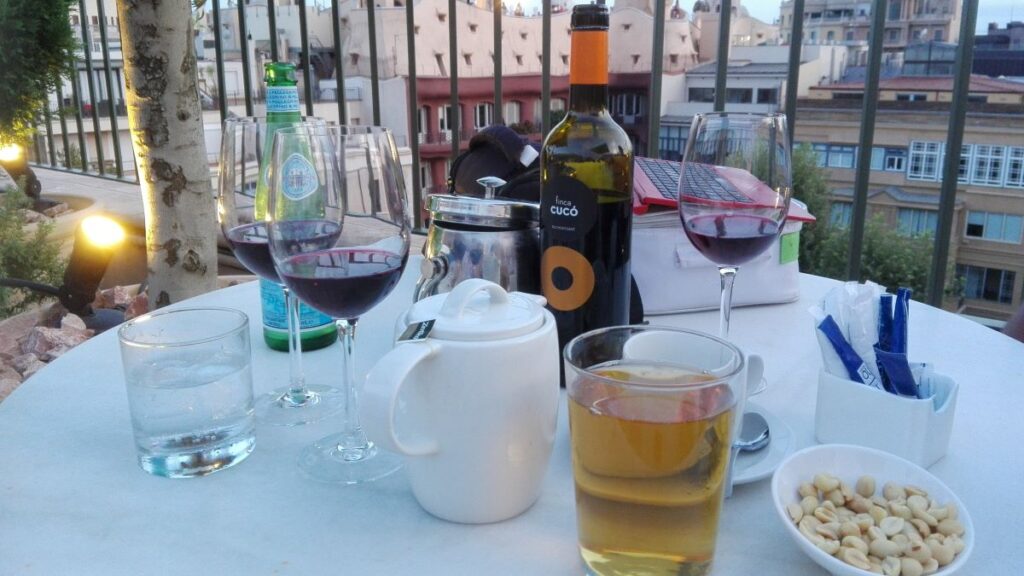
It’s not easy when you have to cut out alcohol and those wretched sweeteners.
As for juices, they are very difficult to digest and are not necessarily a good idea.
There are herbal teas and infusions …
Coffee and tea can be consumed according to your tolerances but in moderation.
In the summer, I often have iced tea (not the type that’s full of sugar and sweeteners!) or I order herbal teas (mint or verbena style) with a big glass full of ice cubes, and that does the trick.
Lemonades are also a good option, if you don’t add a ton of sugar, obviously!
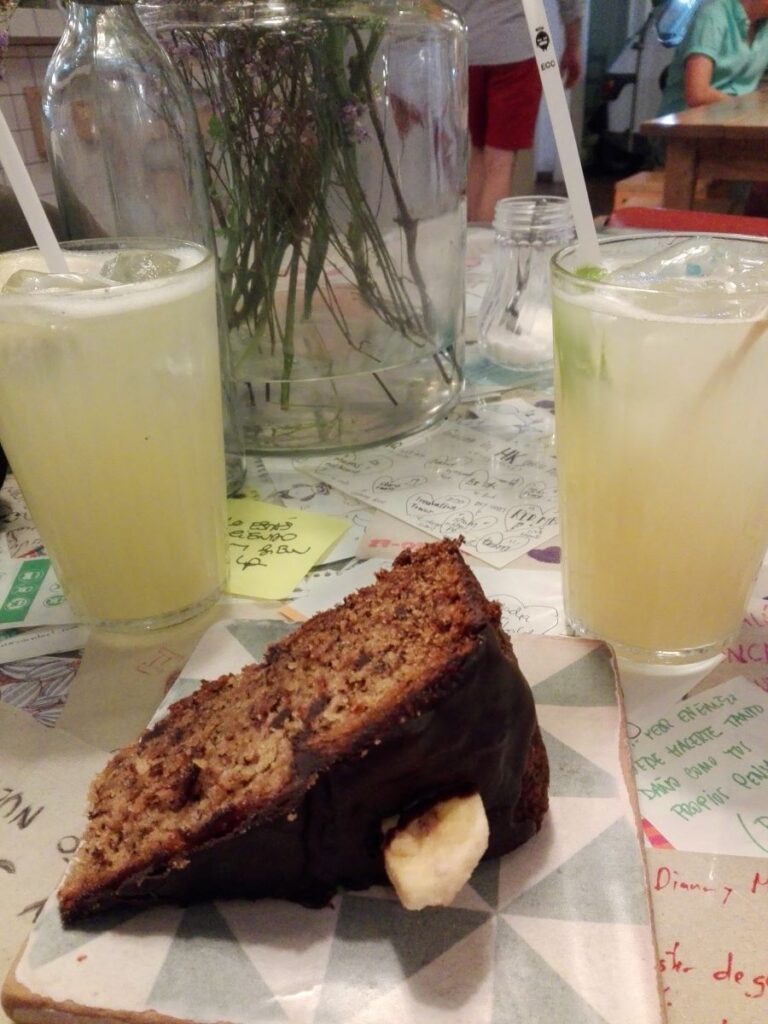
I think that was the hardest part for me, because when you go out for a drink with friends, there aren’t many options to be honest. But I have become a real fan of herbal teas now, and little by little I am also discovering their therapeutic virtues!
Ten tips for starting a FODMAP diet
1. Replace FODMAP-rich foods with ones that are low in FODMAP
Make a list of your current diet and for those foods that are high in FODMAPs, find an equivalent. This is a great way to make sure you don’t miss anything, either in terms of nutrition or taste.
Here are some examples:
Replace:
- Honey with brown sugar or maple syrup
- Dairy yoghurts with coconut-based yoghurts (be careful to avoid soy-based products like yogurts or drinks as they are high in FODMAP)
- Wheat bread with spelt bread
- Milk chocolate with dark chocolate
- Pistachios, almonds and peanuts with different types of nuts
2. Find recipes low in Fodmap
There are many books to guide you. I started with one by French endocrinologist and nutritionist Dr Pierre Nys called “My little magic recipes without Fodmaps – SOS anti-bloating” which also gives advice on different foods, whether or not they can be consumed, and if so, how and how much.
I’m sure you can find something similar. Just go to a bookstore (Not Amazon, please! Devastating for our economy. We want to protect the local economy here and local bookshops are great because you can speak to a PERSON who will be able to advise you).
You’ll also find lots of sample low FODMAP recipes online.
3. Refer to the relevant sites
The list of low-FODMAP foods can sometimes vary from site to site.
The University of Monash in Australia has done extensive research on this subject. They will give you the most reliable and accurate information. Also, there are foods low in FODMAPs that may not be right for you. Always listen to your body first!
4. Use technology
Downloading their app can help you choose your ingredients.
5. Start your FODMAP list gradually
This same university has developed a simplified FODMAP diet.
This is a good place to start if the FODMAP diet seems a little daunting. And if you feel a little better, it will motivate you to keep going.
6. Keep a log
This will help you identify what you are sensitive to.

7. “Upgrade” your FODMAP diet one step at a time
After the 6-week strict FODMAP diet, re-introduce one food per week and see if you can handle it.
The key is to do it one by one, as otherwise, it will be difficult to judge. Some foods might hurt you days later. That’s why: once a week, with a 7-day interval before the next!
8. Quantify the amount of food ingested
Even if you can’t stand a certain type of food, monitor how much you had of it that made you sick. In fact, sometimes cutting back will allow you to continue eating a certain food. For instance, I can eat half an avocado now, without any problem.
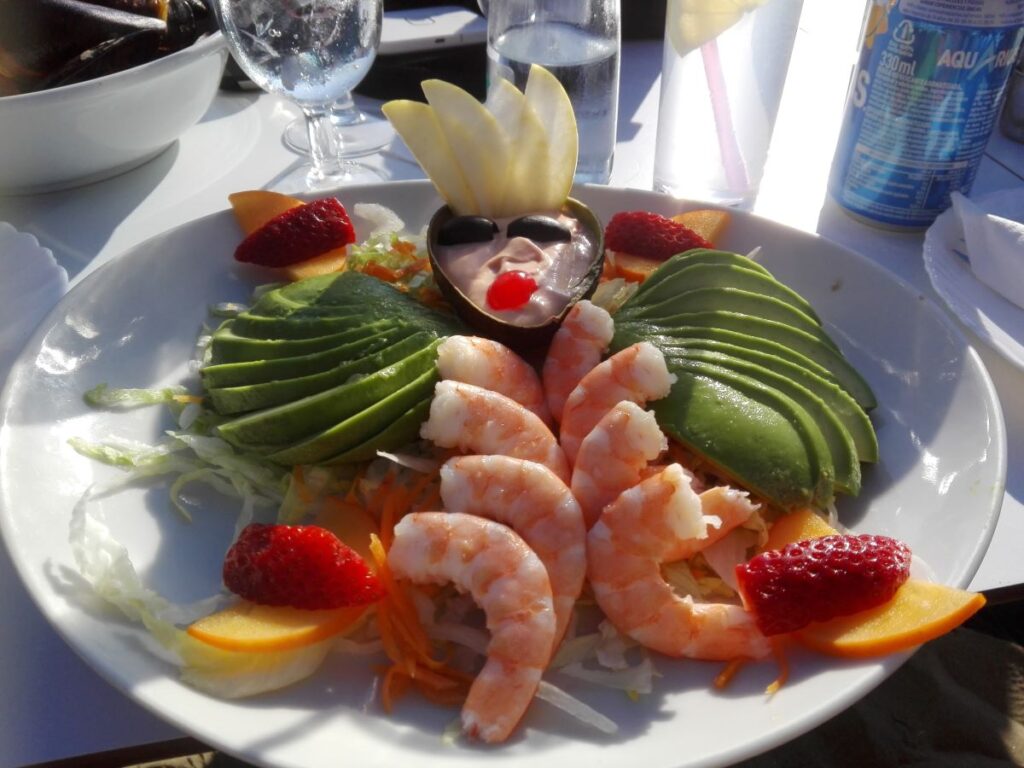
9. Opt for the most natural form of food possible
For example, I continue to eat wheat bread if it is made with sourdough, because it will not have all these additives that are so harmful for digestion and your health in general.
10. Get advice from a professional
A nutritionist is truly your best ally. Talk to her/him about the FODMAP diet and ask her/him to help you. That’s what I did, and this is a must if you already have allergies or if you are vegan, vegetarian, or even flexitarian.
Especially for vegans, because there is hardly anything left to eat when you are on a FODMAP diet, as this vegan explains on her site.
Here, a professional is necessary to avoid dietary deficiencies.
My nutritionist gave me a low FODMAP diet plan to help me find the right balance.
She gave me some ideas of a low FODMAP breakfast, lunch and dinner, as well as snacks in between meals.
Things that I never had before like oat flakes with banana and rice milk for example, instead of my usual bread – butter and jam, way too high in FODMAP!
Going on holidays or going to a restaurant with the FODMAP diet: an delusion?
I won’t hide from you that it’s hard to follow when you are outside your “comfort zone”.
There is no FODMAP menu on a plane…
So it’s up to you to see what irritates your bowels the most. If it’s wheat then ask for a gluten-free menu, if it’s dairy, ask for a lactose-free menu.
FODMAP in long-haul flights
I rarely fly long haul – maybe once a year at most. So I take the time to contact the airline. Last time I explained to them that I cannot eat sweet, fat or raw, and that I need lactose- and wheat-free food.
At first, the airline rejected my request. But then, after reflection, they somehow contemplated my request and I was treated to an almost perfect low FODMAP meal.
FODMAP at the hotel
It’s simple: I always contact the hotel in advance to explain what I need. The last time I did this, in 2016 on my trip to Brazil, it went extremely well. Brazil has a lot of lactose-free products, such as breakfast milks of all kinds (oats, coconut, almonds) or a lot of wheat-free products like quinoa, oats, tapioca or rice.
After that, it is true that I often prefer hotels that offer kitchenettes, because it can be tiring for my digestive system to eat overly “exotic” dishes for too long.

FODMAP at restaurants
That’s more difficult because you can’t contact them in advance, unless you plan every move, and that’s not my idea of travel.
Moreover, it is true that it is more or less easy to manage from one country to another. Even in Italy, the land of pasta and pizzas, I manage!
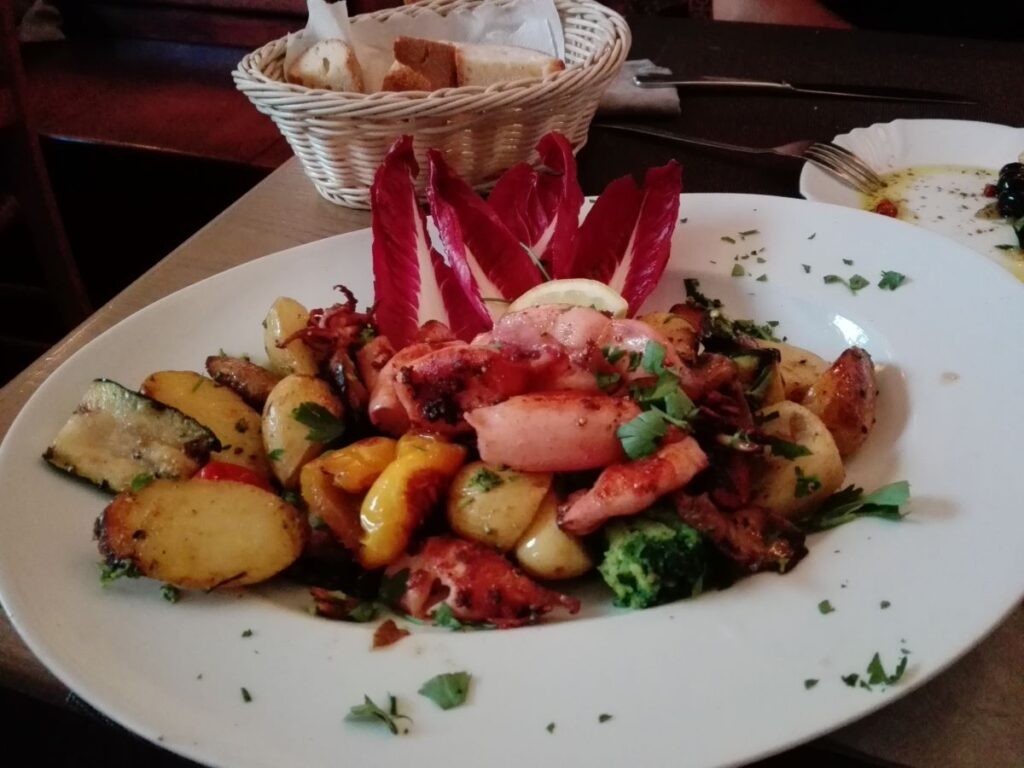
I study the menu before I sit down in a restaurant, as it has happened that I have not been able to find a meal that suited me, unfortunately … Rarely, though.
Then I explain to them that I cannot eat greasy food, sauce, garlic or onions, and so ask them to put the sauce aside, as I explained in my article on Jeonju in South Korea.
We have to be flexible and expect to be given the odd ingredient that does not suit us, and sort it out.
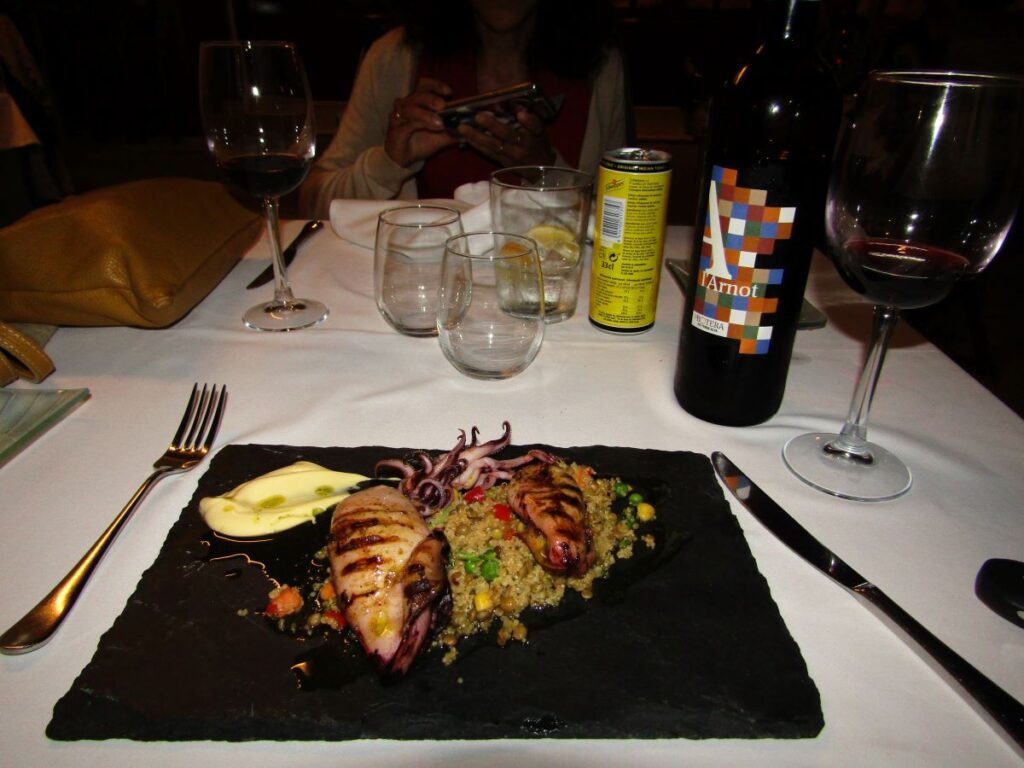
This is why my project aims to raise awareness among restaurants and cafes on the topic of food intolerance and allergies. Those offering menus indicating allergens are generally more flexible and accommodating than others. Small family businesses are also sometimes friendlier than big chains, and I prefer them for their quality of local produce and service.

We’re always looking for restaurants or cafes like this, so if you know of any, anywhere in the world, please leave their addresses on our recommendation page to help our community find the places that suit their needs.
In conclusion…
Eating can be a real nightmare when you have a condition like IBS, fibromyalgia, or simply bloating.
The FODMAP diet can help you recover the pleasure of gastronomy when it is adapted to your body, and often reducing the need for medication*!
*always check with your doctor before reducing or stopping a medication
Personally, I initially thought the FODMAP diet was too restrictive. But watching what I was allowed to eat, I discovered new foods and flavours through delicious recipes that I might not have known otherwise.
Don’t let people around you tell you that your food is sad, it is not true. It’s just different and responds to your digestive needs! Plus most of the time it’s healthier.
And with a little patience, you can even cook for the whole family by concocting a small low-FODMAP menu that will be delicious!
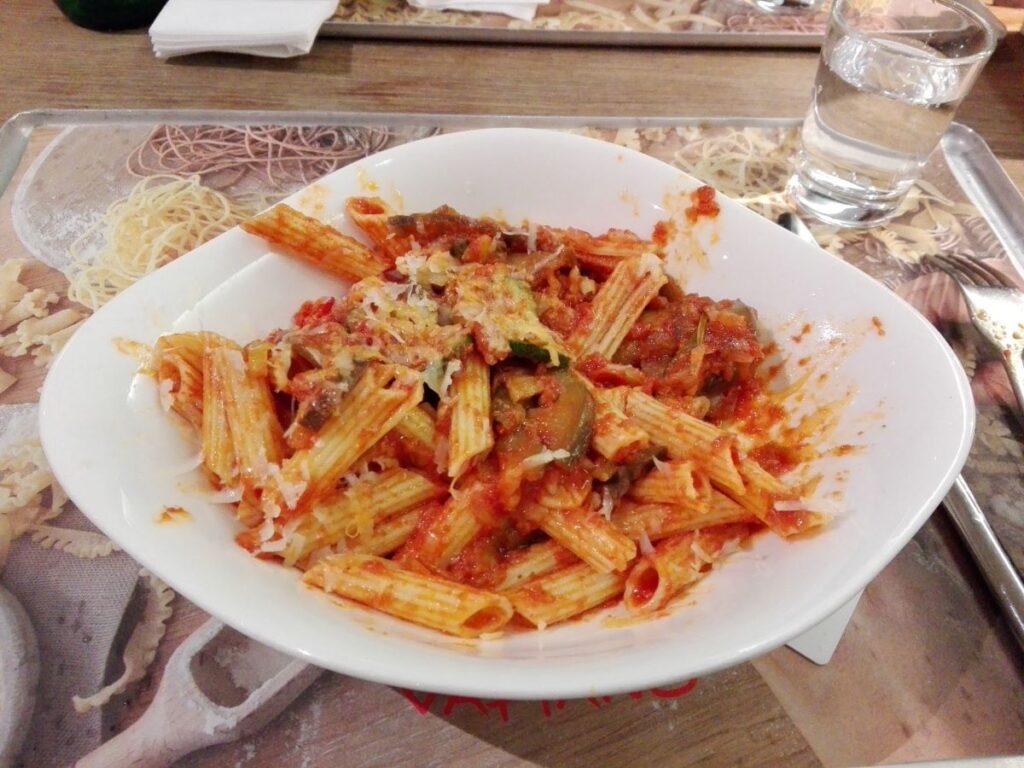
It’s still better to eat a meal on a diet that doesn’t make you sick when you leave the table! You will rediscover the joy of eating! This is the good news!
So, put your aprons on and bon appétit!
Let us know in the comments below if this article has given you a better understanding of what the FODMAP diet is.
And feel free to share it with your loved ones so they can better understand your needs, or with others who, like about 5-10% of the world’s population, live with this chronic disease.
Disclaimer: this article is for information only and doesn't replace medical advice.
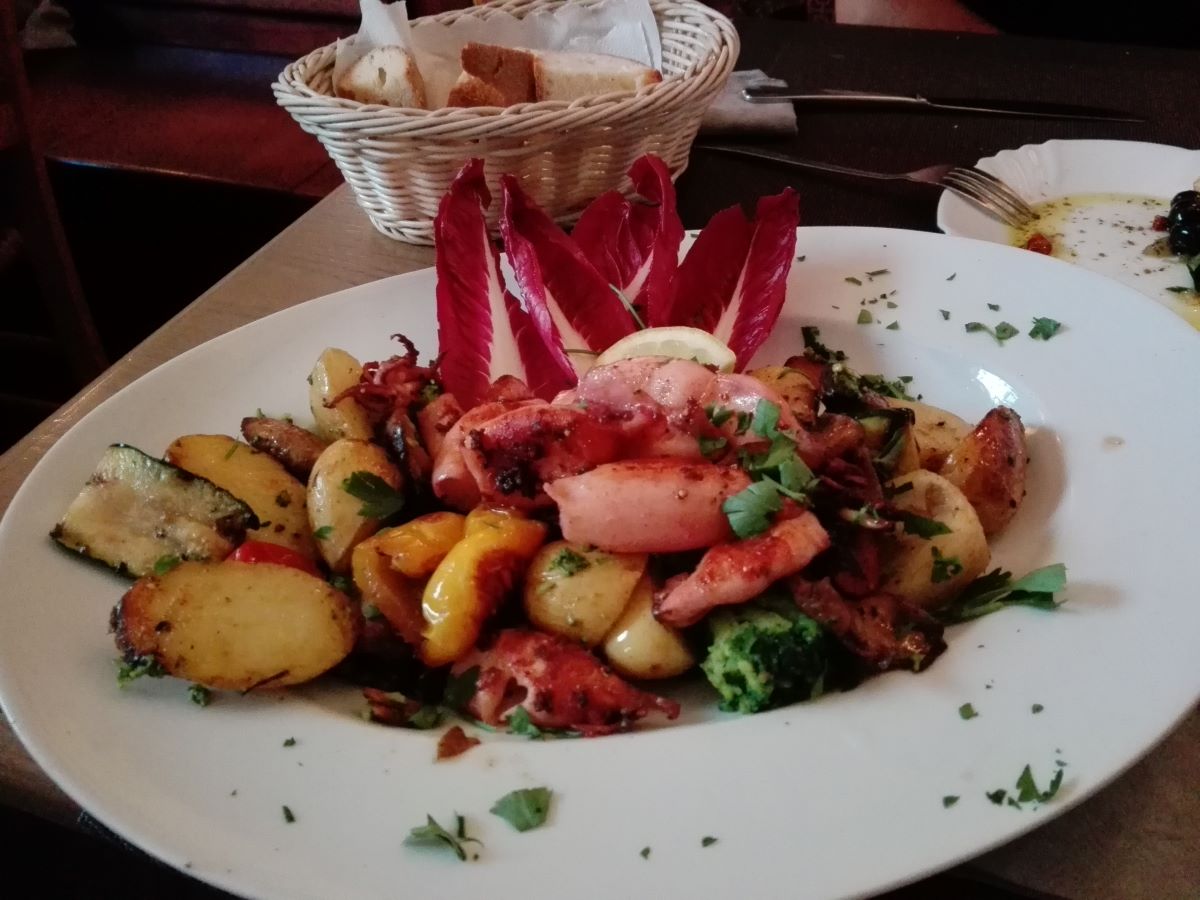
You May Also Like

Why singing is good for you: 7 health benefits
September 18, 2020
New year’s resolutions: inspiration for a healthy body and mind
January 26, 2020


One Comment
Pingback: